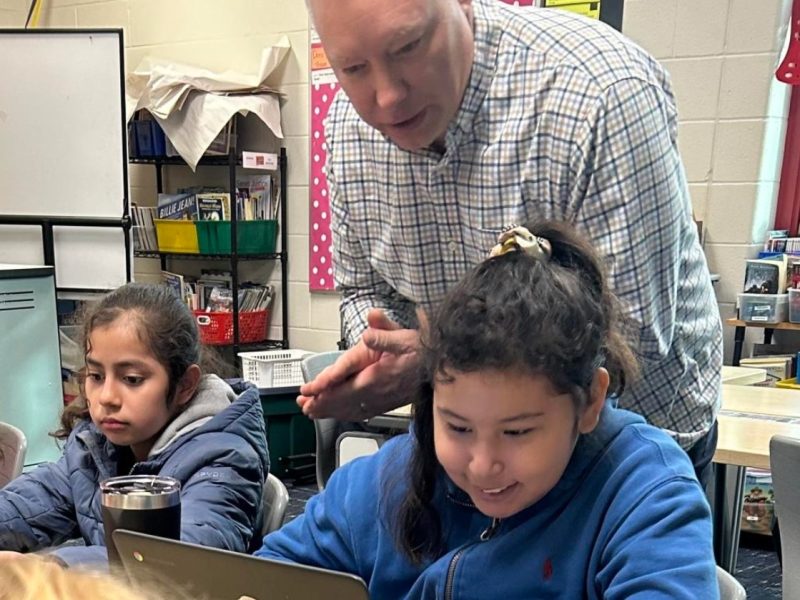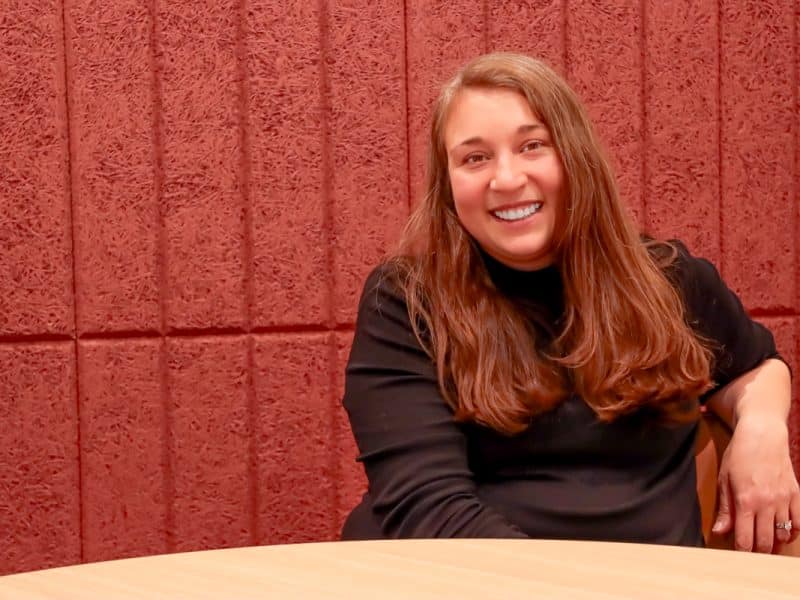West Michigan teens tackle ‘wicked’ problems at the Wege High School Collaborative Studio
West Michigan high school students tackle complex global issues at the Wege High School Collaborative Studio. The two-week program showcases the power of youth-driven sustainable design.
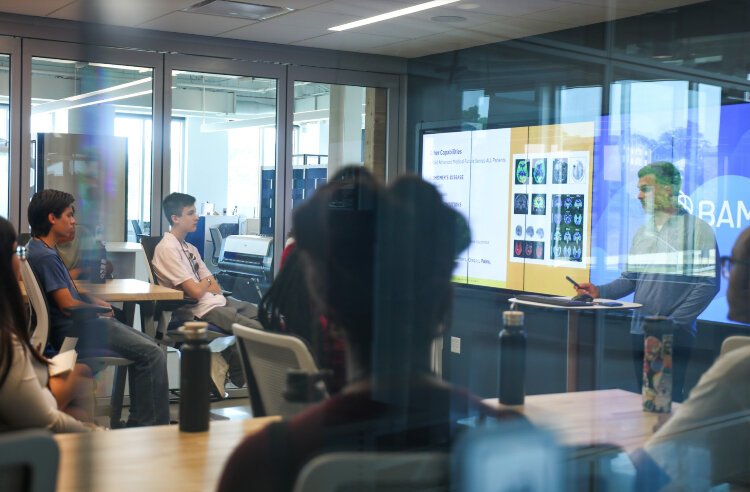
This summer, 20 West Michigan high school students worked on solving “wicked problems” by participating in the Wege High School Collaborative Studio. These young innovators spent two weeks with Kendall College of Art and Design of Ferris State University (KCAD) tackling issues that could shape their futures.
Over the course of the program, students formed five-person teams, each tasked with identifying a “wicked problem”—a complex issue with no easy solution. After days of brainstorming, research, and collaboration, the teams presented their innovative design solutions on Aug. 2.
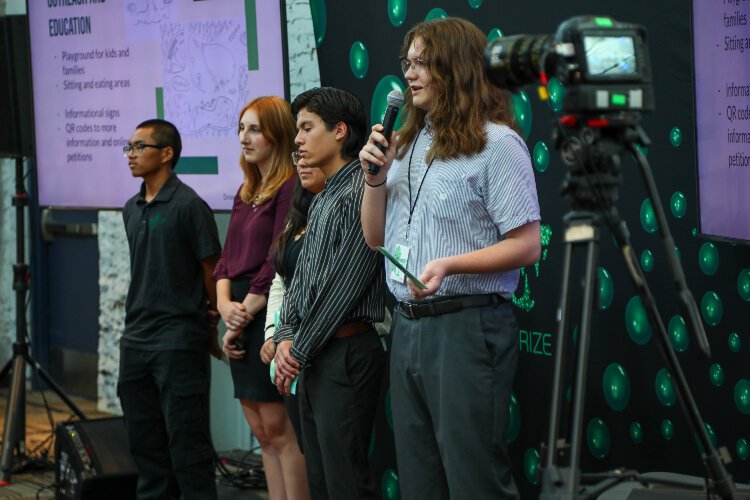
West Michigan high school students tackle complex global issues at the Wege High School Collaborative Studio.
Innovating for a healthier future
Jacob Miles, a senior at Wyoming High School and a member of Team Blue Jays, says he and his team often saw false medical advice spread rapidly online during the COVID-19 pandemic.
A visit to BAMF Health inspired the Blue Jays to work on preventing the spread of online medical disinformation. The Blue Jays emphasize the need for trust in medical information.
“One of the things we thought of was guiding people on the right path,” says Miles. “If people were being guided in the wrong way, then there won’t be trust there.”
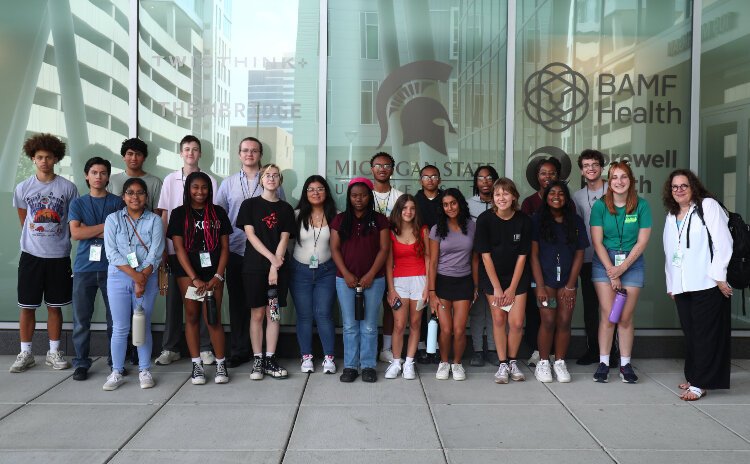
Wege High School Collaborative Studio students visited BAMF Health.
His team’s solution? An organization dedicated to combating online medical disinformation through collaboration with health care providers. They intend to create educational campaigns targeted at children, teens, and parents/guardians.
“We’re next in line,” says Miles. “We gotta make sure that kids are knowledgeable. Because science doesn’t lie, but people do sometimes.”
Tackling construction and demolition waste, one brick at a time

City Middle High School senior Calvin Donahue
Another student team, the Earthworms, is addressing the problem of construction and demolition (C&D) waste. One member of Team Earthworms, Calvin Donahue, says that he and his team felt inspired to work on C&D waste while listening to a presentation from the director of Grand Rapids’ Public Works Department.
Donahue, a City Middle High School senior, says the director briefly mentioned hand-sorting construction waste.
“They’re not able to reuse most of it,” says Donahue. “They don’t have time. So they have to just dump it because there’s no way for them to recycle it. And that really got me and my group thinking about that and how we can better use construction waste and recycling.”
In their presentation, the Earthworms revealed that demolished buildings in the United States are most likely to be dumped into a landfill. The Earthworms propose policy changes that encourage sustainable deconstruction by implementing practices such as recycling and upcycling.
Further, the team recommends using upcycled and recycled materials in regional parks to raise support for deconstruction, recycling, and upcycling projects.
Donahue says the Wege High School Collaborative Studio exposed him to new ideas in design.
“So I had never really heard of a circular economy,” says Donahue. “The thing that really stuck out to me was they all kept saying ‘designed for disassembly.’ And that really stuck with me, because when we went to different areas, you consistently saw all these things were designed to be functional and cost-efficient, but most things aren’t designed with the idea of what their future is going to look like. So when it’s no longer in use, how is it going to be discarded, recycled, or thrown away?”
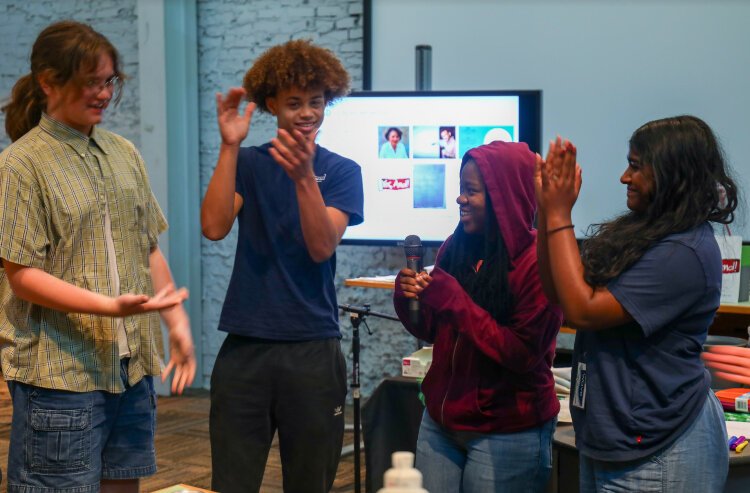
This year’s Wege High School Collaborative Studio group was the biggest the program has had. It will be back next summer for its fifth year.
Donahue says he aims to keep that in mind when approaching a project from a design or architecture standpoint.
“When you’re designing something, how is it going to be repurposed or reused later?” he asked.
Programs and prizes that shape sustainable futures
Professor Gayle DeBruyn is the program chair of collaborative design at KCAD and leads the Wege High School Collaborative Studio. She says this year’s group was the biggest the program has had. It will be back next summer for its fifth year.
“If you’re going into your junior or senior year this summer, our applications will be opened by Thanksgiving. And then we award positions in June or July,” says DeBruyn.
Students who participate receive a stipend of $595, free lunches, and a two-week bus pass. They also leave with portfolio-ready work to enhance their college applications.
DeBruyn says that the Wege High School Collaborative Program is a feeder program for the annual Wege Prize, an International Collegiate Competition in which college students contend for $65,000 in cash prizes.
Applications for the 2025 Wege Prize are now open at WegePrize.org. The submission deadline is Oct. 6.
College and university students from around the world can apply for the Wege Prize in teams of five. The teams must represent different academic disciplines, institutions, and degree levels. They must also come prepared to work on a “wicked problem.”
“It’s not supposed to be a solved problem yet,” says DeBruyn. “But throughout the nine months students work on it, they build on it, they prototype, they test, they find metrics, and then they deliver.”
DeBruyn notes that the 2023 team that won first prize delivers banana leather from banana crop waste. The banana leather maker, Banofi Leather, upcycles banana crop waste. Banofi claims to reduce water use by 95%, carbon emissions by over 90%, and toxic waste by zero compared to traditional leather.
For now, the 2024 Wege High School Collaborative Studio participants are energized by what they learned in the program. They’re thinking about design and their futures.
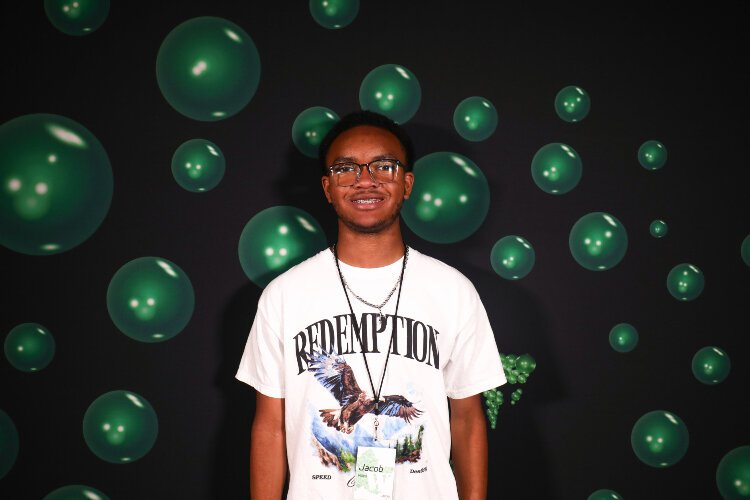
Wyoming High School Student Jacob Miles
Jacob Miles, for one, feels inspired by the support and camaraderie he found.
“To the kids of my generation, you can do anything you want and achieve it,” says Miles. “As long as you work toward it. Work through your goal and stay consistent with it.”
For more information or to fill out an application, go to https://wegeprize.org
Laura Bergells is an executive business communications coach from Grand Rapids. Connect with her at LinkedIn.
From furniture to shoes, from arts to education to even policy creation, design is everywhere you look. Designed in Michigan, a story series coming out of West Michigan, is devoted to sharing the expansive role design plays in Michigan’s past, present and future. It is made possible through the support of Kendall College of Art and Design and Landscape Forms.

